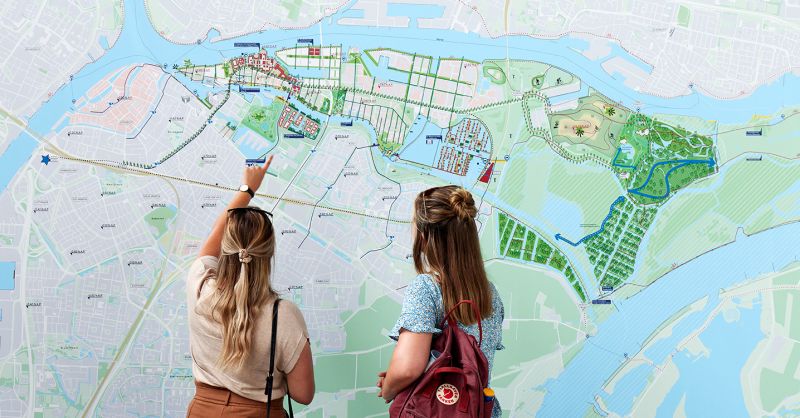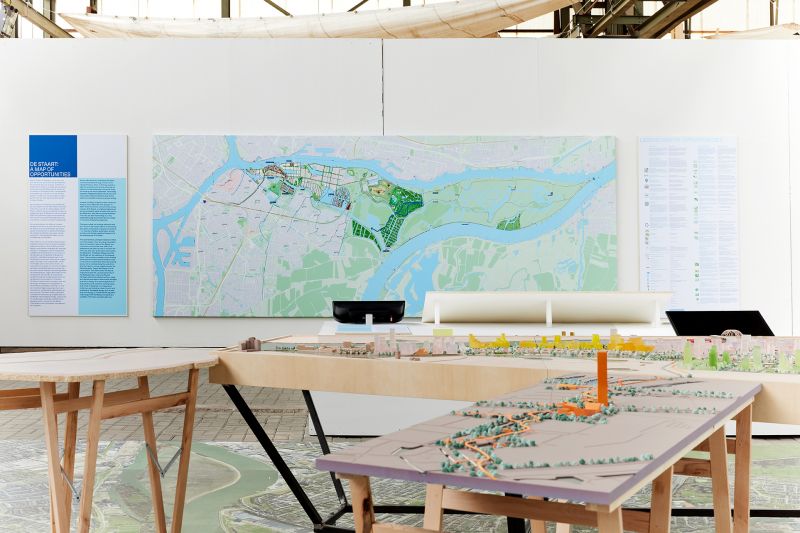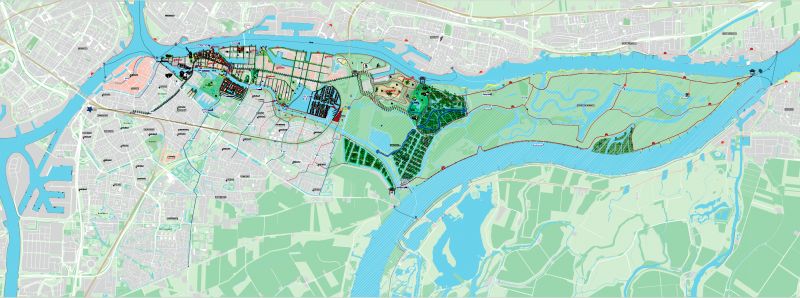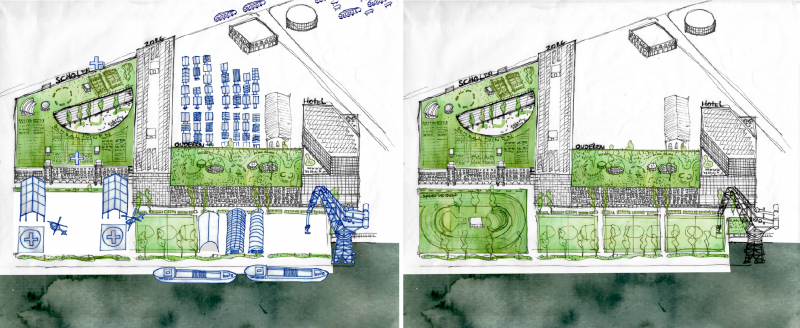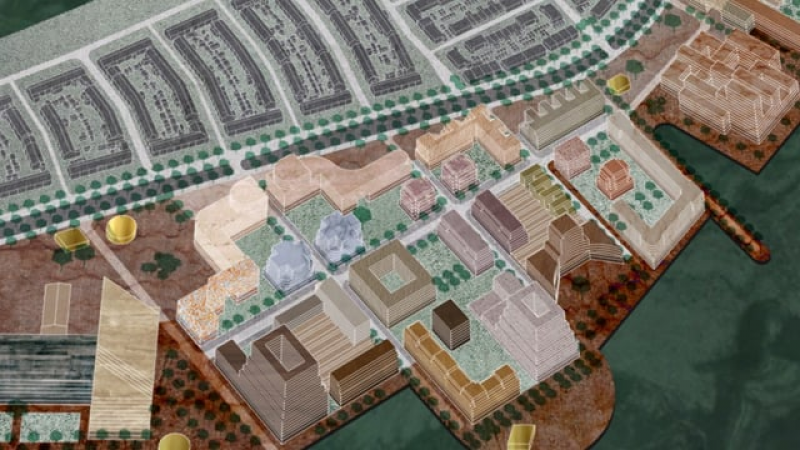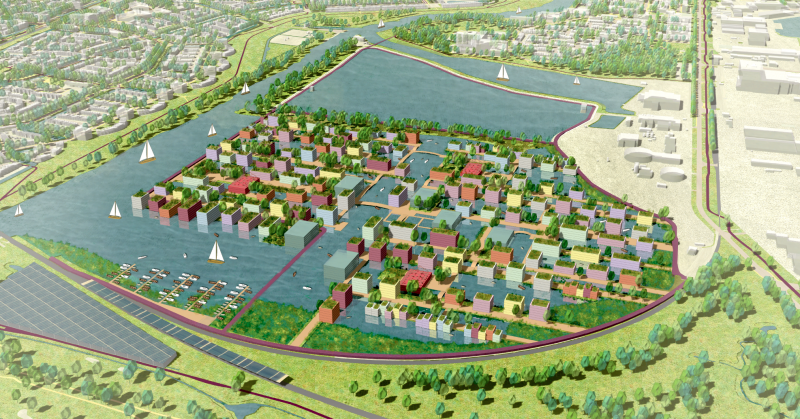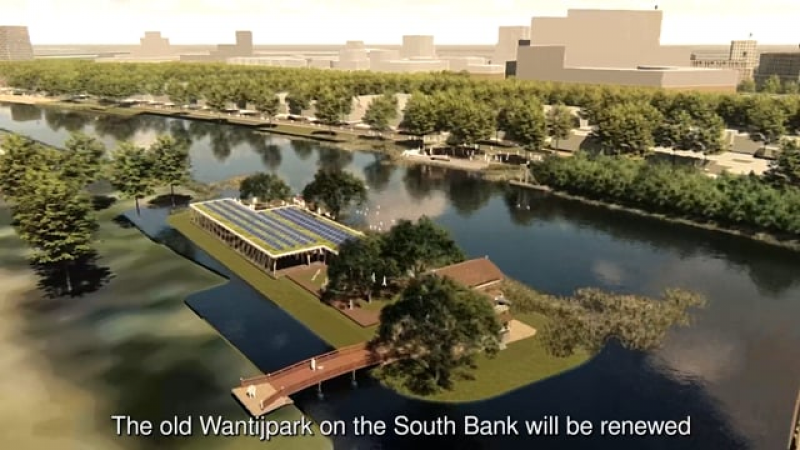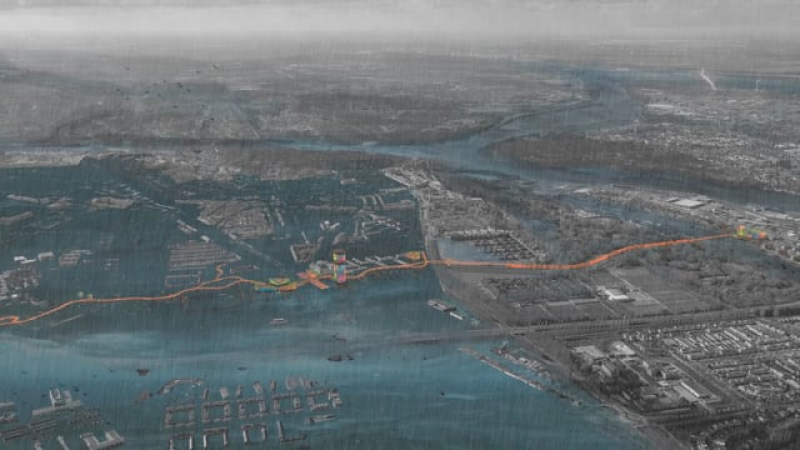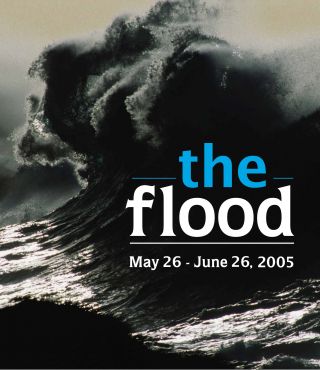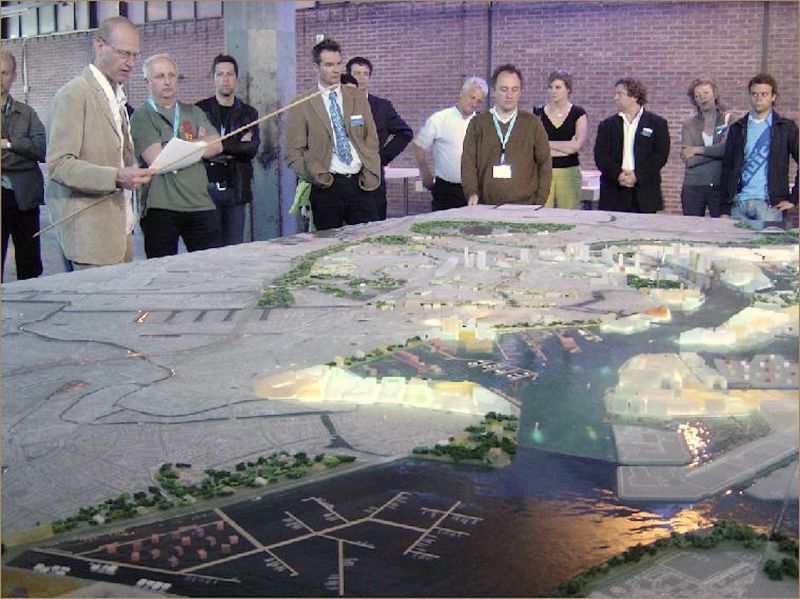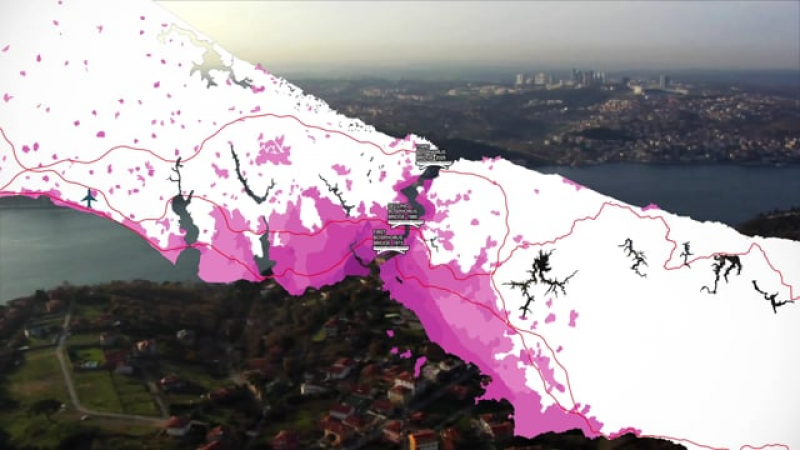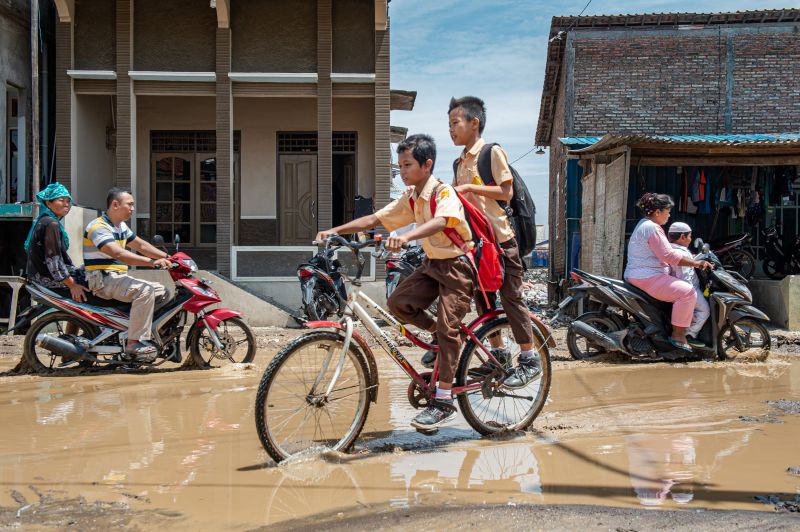
DOWN TO EARTH: THE HIGH GROUND
image: Aad Hoogendoorn
It’s now 600 years ago that Dordrecht was struck by what was perhaps the greatest flood disaster in the history of the Low Countries: the Saint Elizabeth’s Flood. It made the city into an island, which to this day is very vulnerable to flooding. So water safety is clearly of the highest possible priority.
Over the past two years, the IABR–Atelier Dordrecht, under its lead designer Adriaan Geuze (West 8), has investigated how the future need for self-sufficiency in the event of a major flood can be deployed in the search for an answer to the current sustainable area development challenge: How can water safety be used as leverage?
The conclusions of the research are presented in the exhibition THE HIGH GROUND, curated by the chief curator of DOWN TO EARTH, George Brugmans.
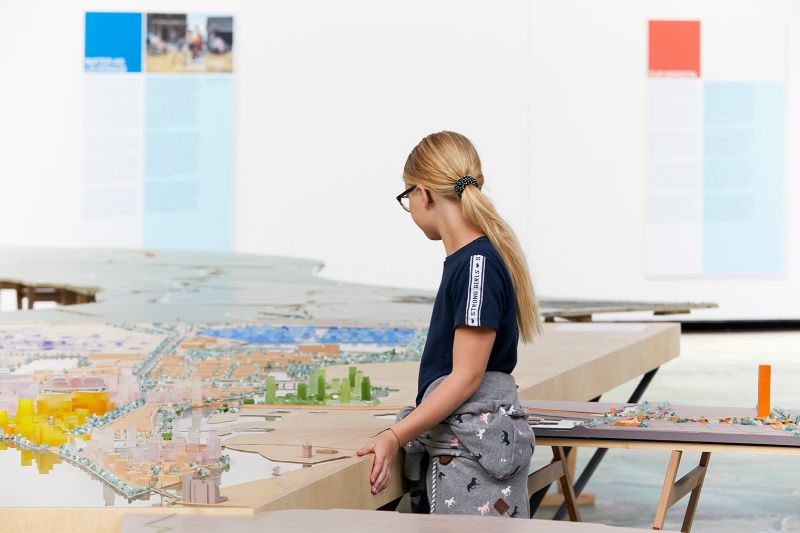
DOWN TO EARTH: THE HIGH GROUND
image: Aad Hoogendoorn
THE HIGH GROUND
The results of the five substudies by VenhoevenCS, PosadMaxwan, DVMB, EGM architects and West 8 that the Atelier has commissioned, make clear that De Staart – now an isolated area with many problems and few prospects – can play an unexpectedly important role in realizing the Dordrecht water safety agenda. If water safety is wielded as leverage to accomplish sustainable and inclusive urban development, opportunities suddenly arise. Indeed, this approach requires that there be flexible space on De Staart at all times, to make it possible to quickly realize the extra square meters needed for peak absorption in the event of a disaster. By making room in the design process for the accommodation of evacuees and other emergency facilities, a city can be created where people not only live and work, but where there is also plenty of room for recreation, education and other public facilities, both through a different approach at the building level and in the outdoor areas.
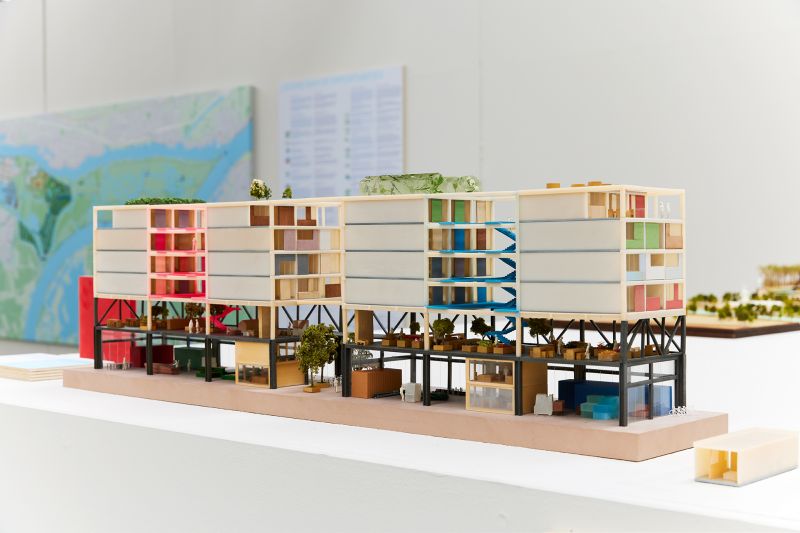
THE HIGH GROUND - build for flexibility
model: EGM/Made by Mistake - image: Aad Hoogendoorn
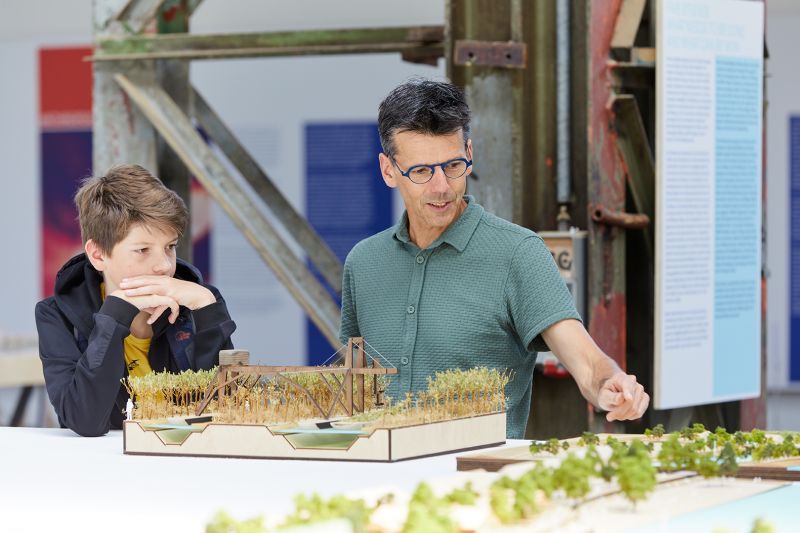
DOWN TO EARTH: THE HIGH GROUND
model: West 8 - image: Aad Hoogendoorn

THE HIGH GROUND - choose to connect
model: VenhoevenCS, Studio KU+
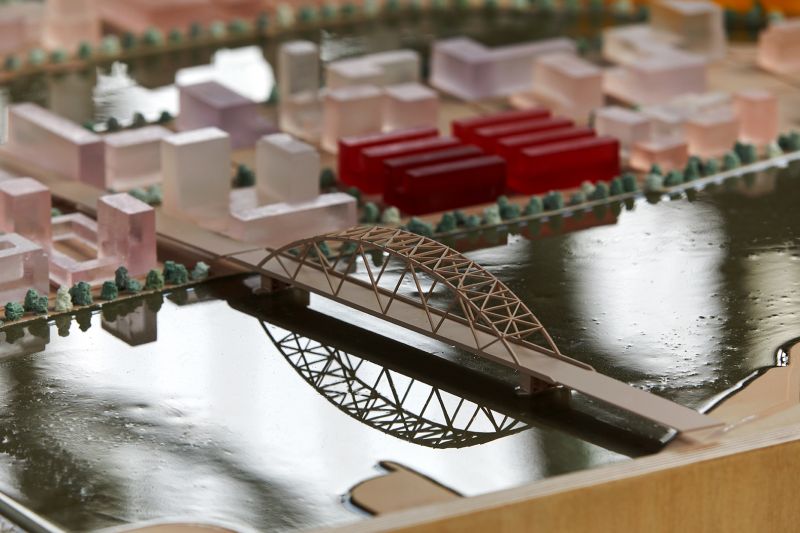
DOWN TO EARTH: THE HIGH GROUND
(detail) model by Made by Mistake - image: Aad Hoogendoorn

DOWN TO EARTH: THE HIGH GROUND
model by Made by Mistake - image: Aad Hoogendoorn
The leverage approach also requires that De Staart is always easily and quickly accessible. This calls for new, good connections in and with the city, and between the city and the region. It also facilitates access to greenery and water. The Wantij can be laid out as a Tidal Park: beneficial for nature, for recreation, and for the quality of life on De Staart. And living on the water, in and with space for nature, becomes a serious option.
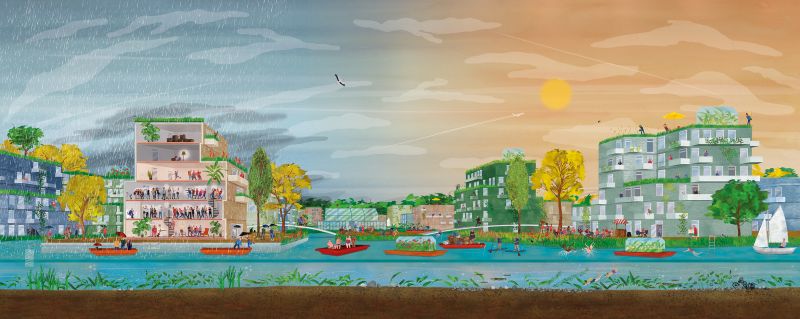
THE HIGH GROUND - Live on the Water - PosadMaxwan
drawing: Merel Corduwener for IABR–Atelier Dordrecht
Hitting many pins with one ball
Dordrecht has the opportunity to hit many pins with one ball: increase water safety and at the same time build housing and stimulate employment, optimize connections in the city and with the region, and improve the quality of life and recreational opportunities for all of its inhabitants. Thanks to the water-safety-as-leverage approach, an opportunity map of De Staart reads like an unmistakable invitation to seriously contribute to the Growth Agenda Drechtsteden 2030 and the sustainability ambitions of Dordrecht.
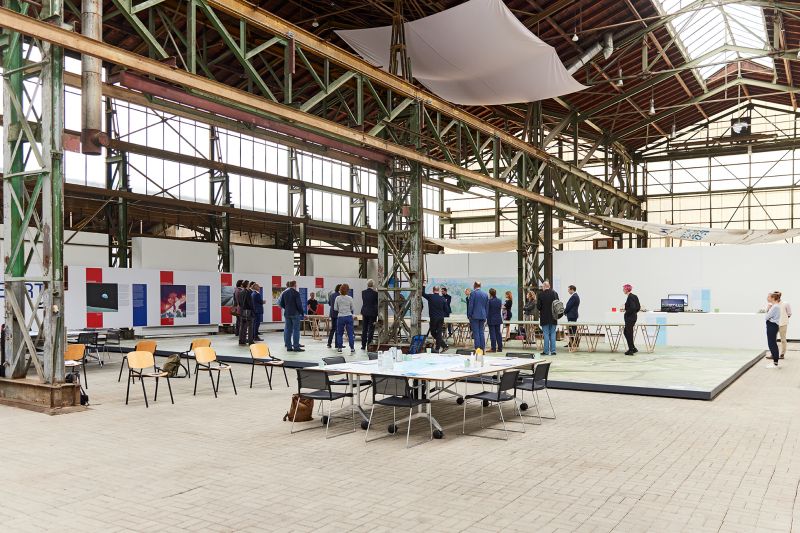
THE HIGH GROUND - ready, set, go: the exhibition as a workshop
image: Aad Hoogendoorn
DOWN TO EARTH in Dordrecht
With THE HIGH GROUND, the biennale takes a trip to Dordrecht.
The exhibition is open to the public from July 3 through August 14, from Wednesday through Saturday, from 1pm until 5 pm.
Please note that the exhibition is closed on Sunday, Monday and Tuesday.
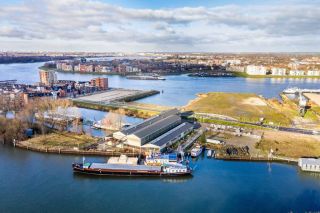
Biesboschhal, Dordtyard, Dordrecht
THE HIGH GROUND can be visited in the Biesboschhal on De Staart, Maasstraat 11, 3313 CR Dordrecht.
Admission is free and registration is not necessary as long as the current corona measures are in force.
For all other pertinent visitors information, click here
Given the pandemic, IABR follows the current guidelines of the Dutch Health Authority. So please remember that because of Covid-19 all dates are subject to change.
